
All you have is coffee
Chugging coffee on the way to work is fine, but if you neglect to eat real food along with it, you could be setting yourself up to overeat. “Skipping meals can bring down energy levels, increase cravings later on in the day, and even cause your metabolism to slow down,” says Krissy Kendall, PhD, science editor at bodybuilding.com. So what if you’re not hungry in the morning? Nibble on a protein bar or a boiled egg, then when your stomach starts rumbling in a few hours, eat something more substantial such as oatmeal, Greek yogurt with berries, or peanut butter on toast. If you’re going for yogurt, check out these good-for-you toppings that amp up the protein.

You like a blended coffee drink
For some people, breakfast is a large commercial coffee drink that’s skimpy on actual java and overly generous with the sugar, cream, and possibly syrup—basically a giant calorie bomb. “If you don’t specifically ask for skim, the milk base of some of those drinks can be 2 percent or even whole milk,” says Anna King, clinical dietitian at Indiana University Health. “If your size choice is a large (or “venti” in Starbucks speak), the extra calories in 2 percent milk (330 calories and 8 gm fat) vs. that of skim milk (270 calories and 0 gm fat) can add up over time to extra weight gain.” Stir in a few sugar packets, and you can easily add another 45 to 60 calories, depending on the size of the packet. If you start cutting back on sugar gradually, you may realize you actually enjoy coffee that tastes like, well, coffee. Speaking of, we’ve got answers to your most important coffee questions.
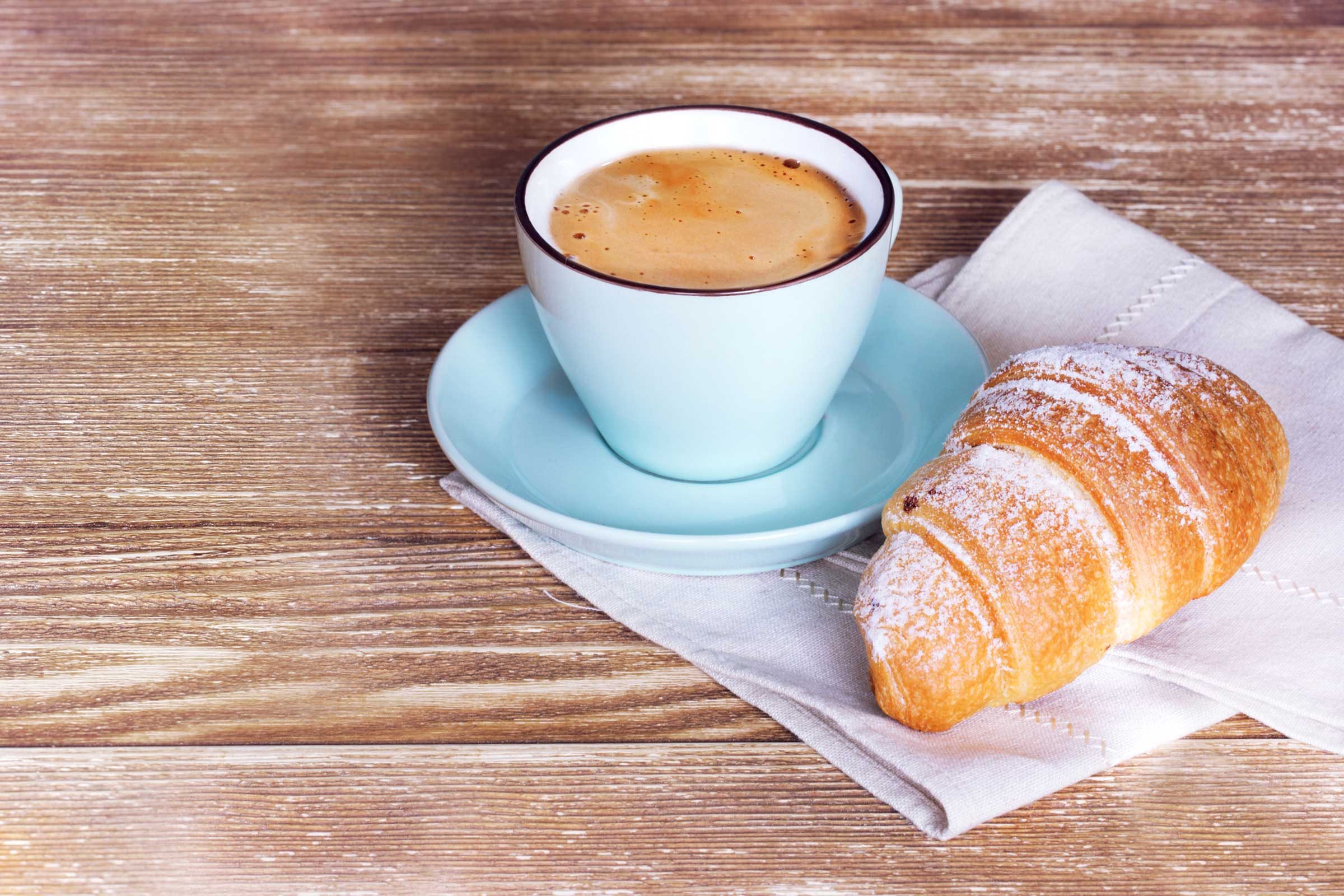
You choose sugar over protein
“Quick breakfast foods such as muffins, pastries, and cereal are loaded with sugar, carbs, and many additives and preservatives,” says Kenny Mauer, NBA referee and founder of Mauer Sports Nutrition. “These foods make you feel tired and sluggish and also put on weight.” If you’re filling up on sugar in the a.m., you’re missing out on the day-long benefits of protein. Besides being essential for our muscles, protein is a dieter’s dream because your body has to work harder to break it down, so you feel fuller longer. Plus, if you start eating protein at breakfast, it will help you reach the daily value for protein, which is 56 grams for men and 46 grams for women at a bare minimum. So aim to get at least some protein with each meal. “Eating whole foods like eggs, chicken, beans, vegetables and nuts is best, but when you are traveling or away from home, a protein bar is another healthy alternative,” suggest Mauer. Vegetarians and vegans can go for these plant-based proteins.
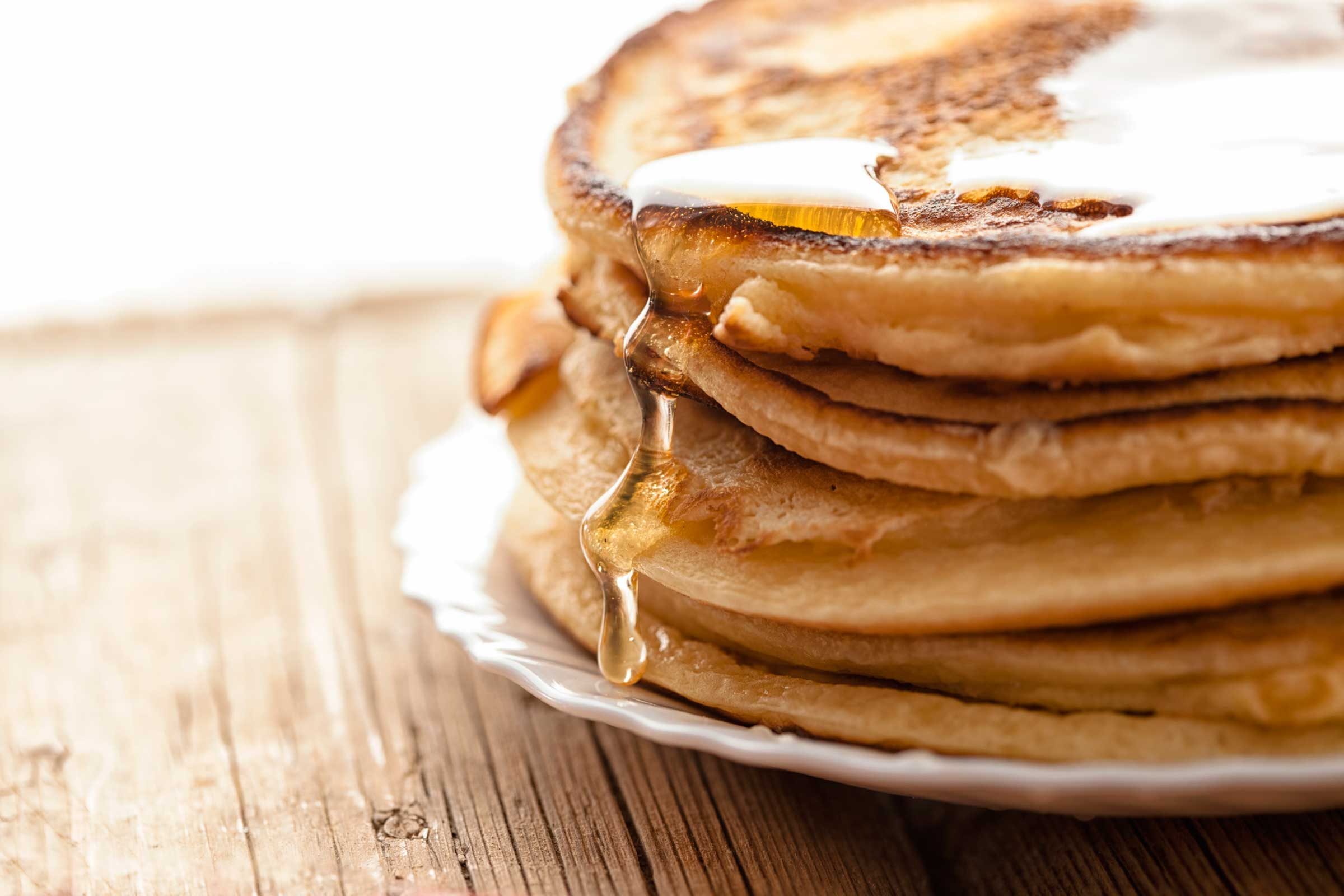
You choose the wrong carbs
Muffins, pancakes, and cereal may be breakfast staples, but if they lack fiber, your breakfast could be making you fat. “Fiber slows digestion, promoting long-lasting energy the next few hours while also working to keep your appetite in check, too,” says Kendall. Think about it: Do you often find yourself ravenous about an hour after eating a cinnamon roll or stack of white-flour based pancakes and syrup? That’s because your carbs are missing—you guessed it—fiber. According to the Institute of Medicine, women need 25 grams of fiber per day and men 38 grams per day.
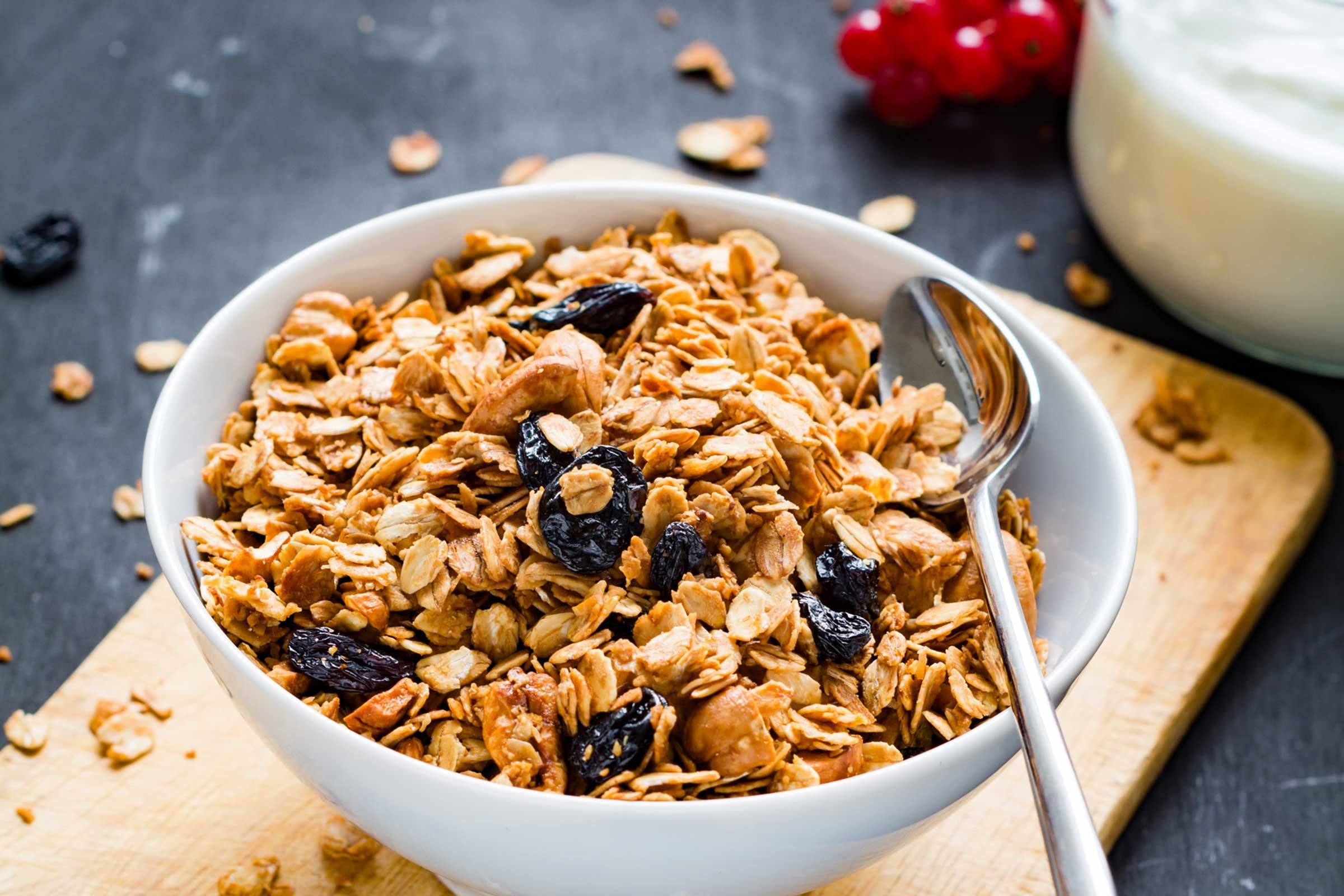
Your bowl is too big
Good for you for eating whole-grain cereal with fiber and protein—just watch how much you pour out of the box, as you can have too much of a good thing. According to a 2014 Consumer Reports test, 92 percent of people poured 24 to 92 percent more cereal when using a 12-ounce bowl, and 43 to 114 percent more when using an 18-ounce bowl. A bigger bowl can mean two to three times more calories than the suggested serving size amount, which is typically about three-quarters to one-and-a-quarter cups. So before you pour out your cereal tomorrow morning, use a measuring cup.
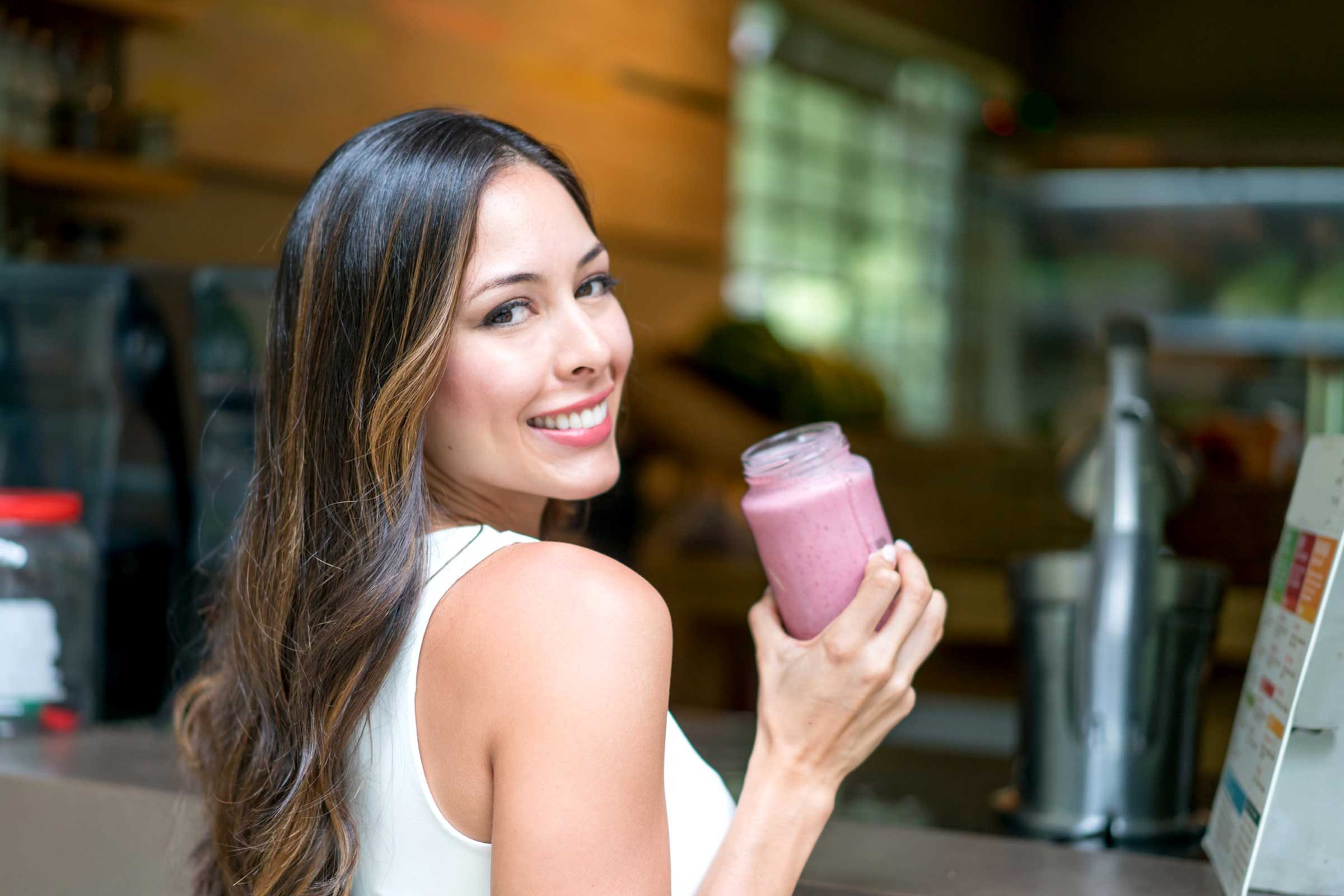
Your smoothie is too sugary
Buying a breakfast smoothie seems like a convenient and healthy option. You’re basically having a fruit salad, right? Ehh, not exactly. “Smoothies typically start with a juice blend as the base, which can add a lot of added sugar to the smoothie,” says King. “If you make a smoothie at home and start with real fruit as a base; then add some skim milk or unsweetened soy milk instead, that would significantly decrease the amount of added sugar.” Extra sugar means a sugar crash and potential weight gain if you make this a daily breakfast choice. Follow these tips to eat less sugar every day.
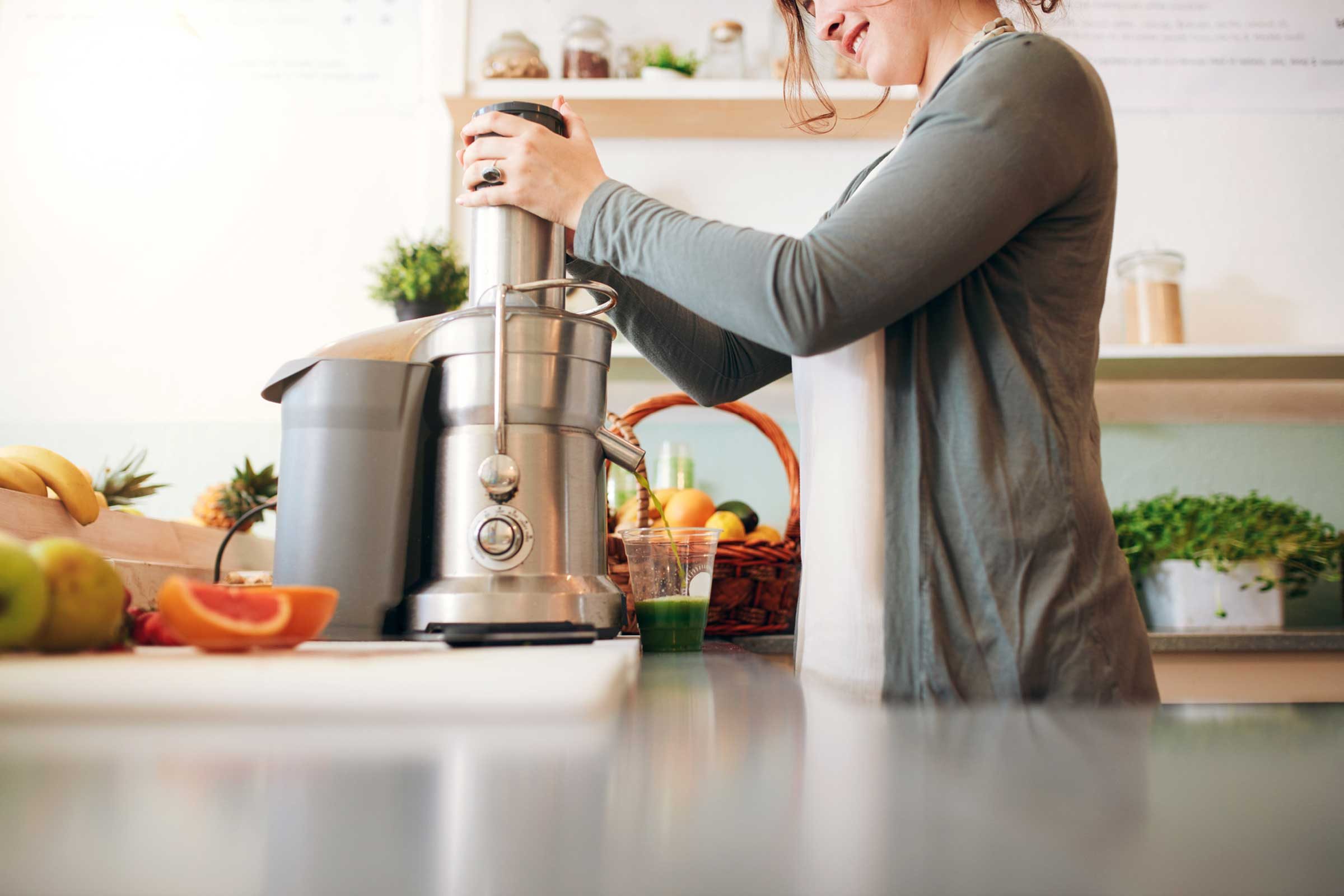
You’re juicing
There’s no doubt that raw juicing can be a tasty way to boost your fruit and veggie intake—but it’s not enough breakfast on its own. “Juice lacks protein and fiber, ultimately promoting hunger and fatigue shortly after consumption,” says Kendall. This doesn’t mean you have to give up your morning juice routine. “Pair it with a lean protein like eggs or Greek yogurt and a high-fiber carbohydrate option,” like a slice of whole-grain toast or a cup of oatmeal. Here’s how to eat more fruits and vegetables without even trying.
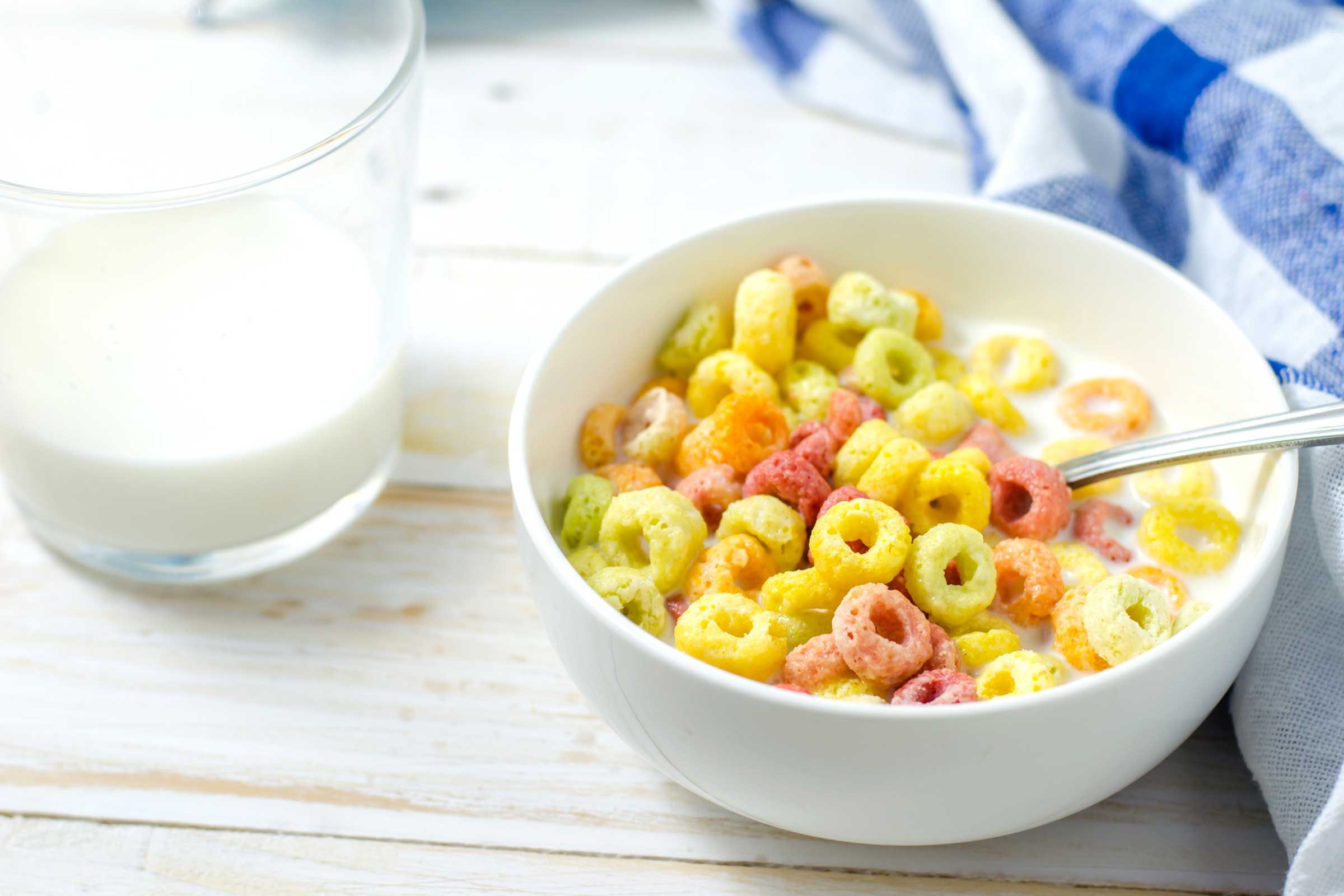
Your breakfast comes in a box
Packaged foods can be very deceiving. When we read labels that say “as much protein as an egg,” “gluten free,” or “low sugar,” we’re inclined to toss the box in the cart and feel pretty good about our choice. “Look closely, and you’ll notice that these products often times contain extra fat, added sugar to replace gluten, and incomplete protein sources to boost total-protein content,” says Kendall. Bottom line: Don’t be fooled by health claims that don’t measure up. These are the food packaging and labeling tricks you still fall for.
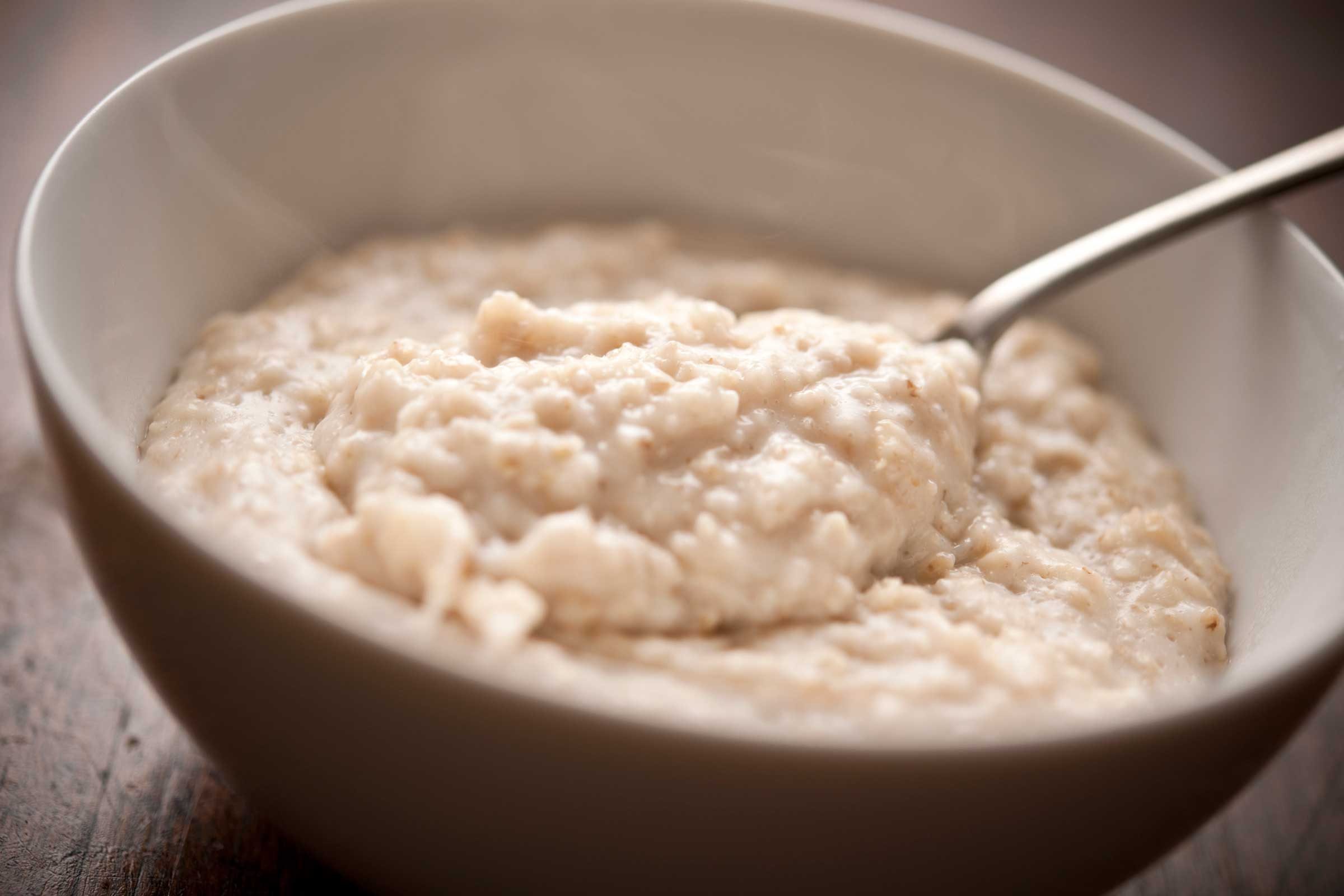
You eat only “breakfast” foods
You’ve always stuck to some combination of the basics—cereal, eggs, toast, pancakes, and oatmeal. No fruits or veggies for breakfast. You’ll eat fruits for snacks and veggies at lunch and dinner, but certainly not breakfast! If that describes you, this is one tradition you may want to change. Adding fiber to your breakfast will make you feel fuller longer (bye, pound-packing vending machine snacks at 10 a.m.) and help you reach your daily value for fiber. Like toast and eggs for breakfast? Spread avocado atop the whole-wheat toast, and top with a soft egg. Jazz up oatmeal with chopped apples, walnuts, dried cherries, and a dash of cinnamon. Add some spinach or toss last night’s leftover veggies with scrambled eggs for a hearty and quick breakfast. Don’t miss these other food hacks for a healthier breakfast.
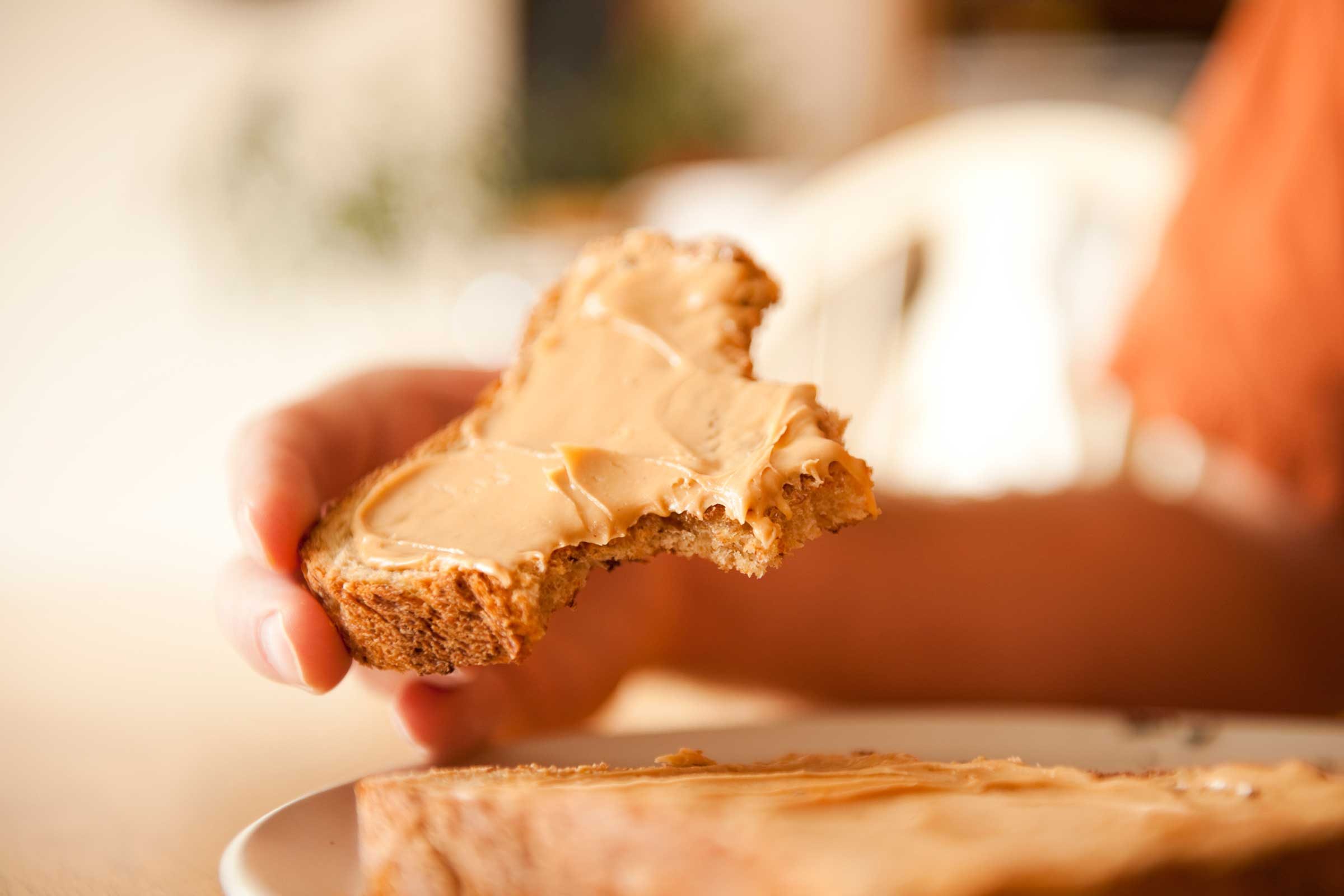
You buy low-fat peanut butter
Low-fat peanut butter on whole-wheat toast seems like a healthy option, but we have some news for you: Low-fat doesn’t mean healthier. In fact, although low-fat peanut butter does have fewer grams of fat (usually about 4 grams less), the trade-off is actually fewer peanuts since manufacturers use added sugars and sodium to try to compensate for the lost fat. That means that in two tablespoons of low-fat peanut butter, you’re eating 4 grams of added sugar and twice as much salt than regular peanut butter, which is not so great for your bottom line. It also means you’re missing out nutritionally, as the fat in peanuts is primarily the monounsaturated type, which is good for your heart. Don’t be afraid to grab that full-fat version—or better still, choose a natural variety made with only peanuts and a dash of salt. These are the clear signs you’re not eating enough healthy fats.
